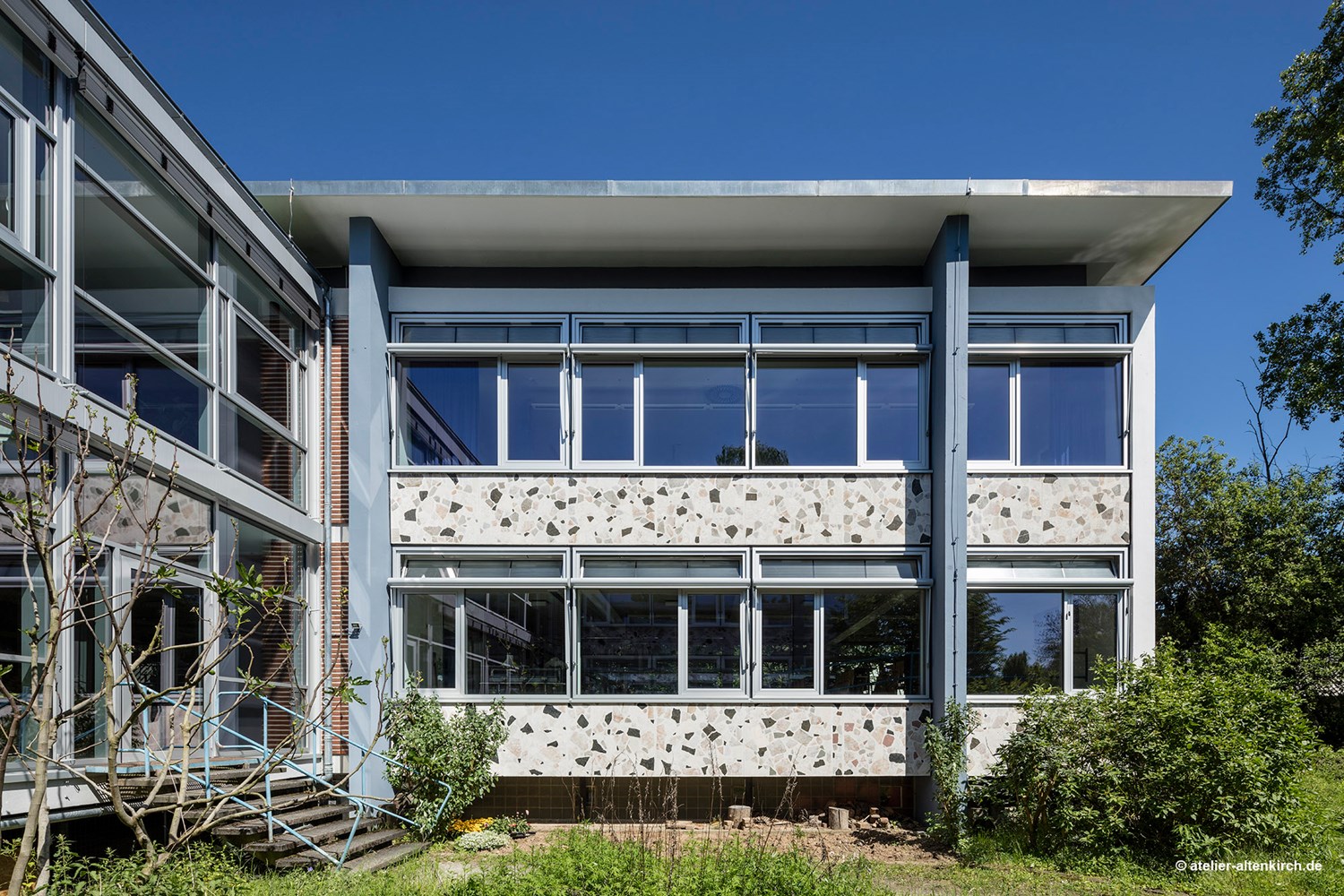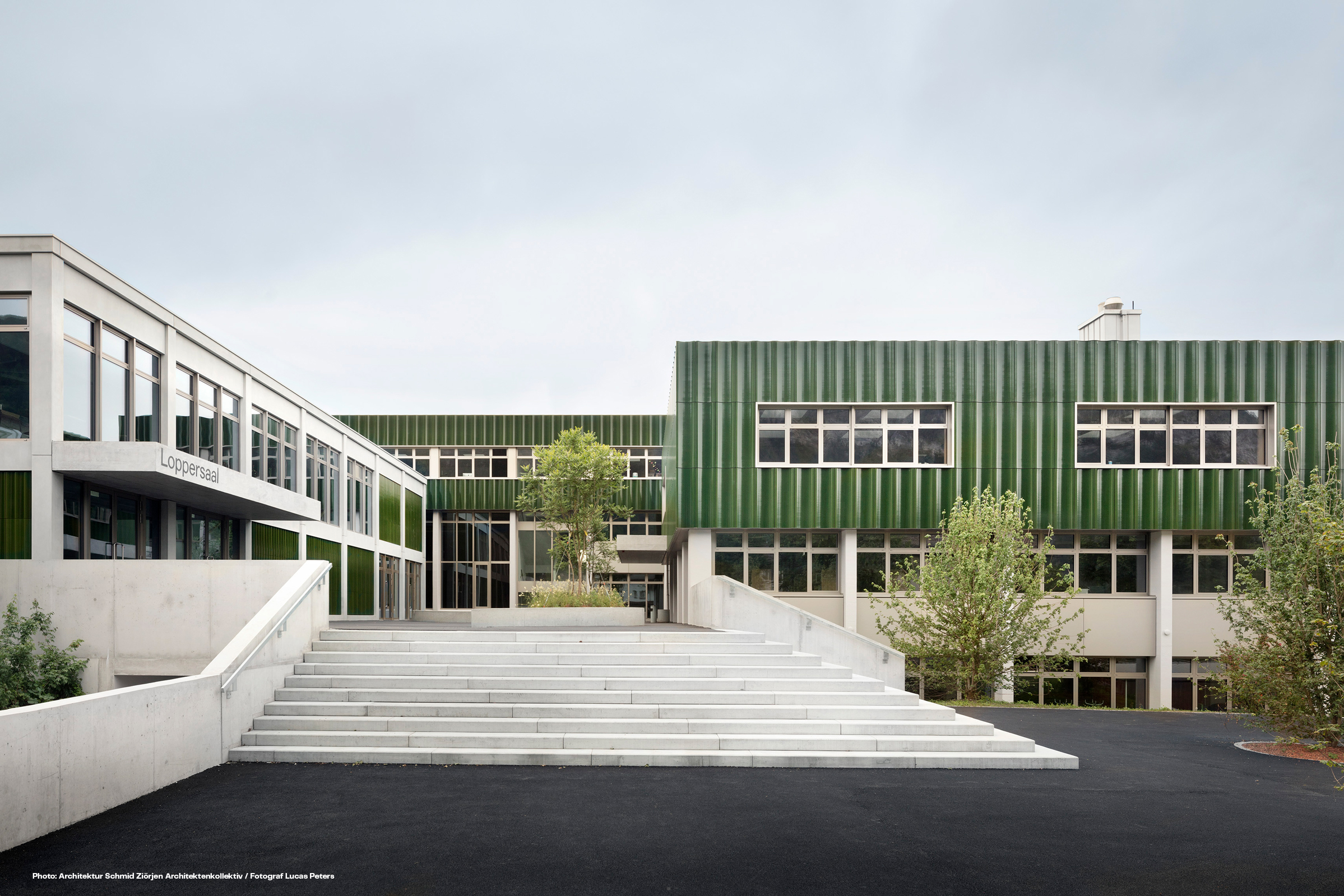The cleanest and cheapest energy is that which is not consumed in the first place. With this in mind, energy reduction strategies are being prioritised, with private as well as public businesses being keen to discover what cost-effective energy alternatives are now accessible. One available choice, which can help building owners make the right steps toward those sustainable targets, is using natural and mixed-mode ventilation systems. The reason? Many air conditioning and ventilation systems in offices, schools, and public buildings are hidden energy guzzlers - not optimally set, outdated, oversized, and – in the long run – expensive.
Growing efficiency demands
Saving energy lowers CO2 emissions and reduces running costs – especially in the building industry. With ongoing legislative actions driving change as well as a heightened public focus on energy efficiency and lowering carbon emissions, public and private companies are now tackling the perennial issue of poor air quality within their interiors. Through a legally binding requirement, businesses have a responsibility to ensure that work environments are well-ventilated, protecting the health and well-being of staff and building occupants. In particular, when taking into consideration that ongoing geopolitical turmoil has contributed to rising energy prices, the demand for both existing and new buildings to be climate-neutral is steadily growing. Thus, building operators are faced with the balancing act of fulfilling comprehensive requirements for heating, cooling, and ventilation technology while at the same time ensuring energy savings. In view of rising energy costs, this issue is becoming even more pressing and can end up making up a loss-making factor. Future building owners, operators and facility managers are therefore expected to use energy sparingly, while at the same time ensuring a minimum air exchange rate, while protecting the fabric of the building with the help of modern ventilation technology. Smart, IoT (Internet of Things) building solutions can reduce the global energy demand.
Read more about IoT solutions
Is your next project aiming for an energy efficient design?
Leverage the expertise of our team, who are well-versed in Building Performance Engineering, to receive comprehensive assistance and guidance for designing an energy-efficient building utilizing natural or mixed-mode ventilation.
The natural approach
The efforts to stay in line with Net Zero aims and bring poor indoor air quality to a conclusion have led to a cultural shift in the carbon-intensive products and systems that have been used to deliver good air quality. And with evidence of rising CO2 emissions globally and their negative impact on the environment, deeper consideration is underway.
Discussions concerning the relative merits of mechanical ventilation, which was once thought to be the best option for ventilating buildings, have been ongoing. Traditional, energy-intensive ventilation systems are increasingly considered as a thing of the past. Instead, specifiers have the option to look toward a more natural approach. Where low-energy, automated ventilation systems can step in to help meet current guidelines, save costs, and reduce overall environmental impact.
The good news is that experience shows that all systems can be optimized, be it existing or planned constructions. And in this context, even simple measures can lead to considerable cost savings. In this context, natural and mixed-mode ventilation systems constitute an aesthetic and cost-efficient means to improving the building’s savings potential.

Natural and mixed-mode ventilation systems from WindowMaster utilize the free forces of nature in clever combination with advanced technology to regulate the indoor climate. Our systems enable seamless, programmable window automation, delivered through smart sensor technology, for more accurate and efficient actuation. Automating openings in the roof and façade guarantee the flow of fresh air into and out of the building, while integrated actuators enable whisper quiet automation of windows. Temperature differences between inside and outside generate pressure differences, thus creating thermal buoyancy inside the building. Fresh air flows in, warm and stale air rises and escapes, while impact from wind conditions also generates pressure differences. This natural ventilation and cooling process offers a high degree of accuracy, efficiency, and safety thanks to sophisticated technology and intelligent controlled ventilation systems.
Eager to know more? Learn all the basics of natural and mixed-mode ventilation systems
Smartness provides energy optimization
Across industries and building types, controlled natural ventilation is increasingly being incorporated into buildings for the good of public health as well as possible carbon reduction. Meanwhile, whether the temperatures are rising or plunging, concerns about growing energy prices lead to an increased need for solutions that will lower emissions. Based on technological advancements, natural and mixed-mode ventilation systems from WindowMaster have paved the way for more healthy, high-performing buildings that support the wellbeing of the occupants. And by utilizing the already existing, free forces of nature to regulate the indoor climate, our solutions can make a weighty contribution to energy and cost savings in building operation, while reducing the amount of materials needed. Thanks to advanced and sophisticated sensory technology, natural and mixed-mode ventilation systems can respond to changes concerning the weather while also supporting the transition away from traditional systems. The actuators operate very economically and are intelligently linked to the building management system, thus letting building owners and operators benefit from an increased window automation for a greater effect. The technology can be programmed to automate systems, succeeding in reduced energy consumption while facilitating in dispelling poor indoor air quality. At WindowMaster, we frequently observe that customers can substantially decrease the required amount of ducting and even the dimensions of mechanical ventilation units. Research indicates a 50% reduction in operational carbon emissions from buildings employing natural and mixed-mode ventilation systems compared to those relying solely on traditional mechanical ventilation systems. This reduction is directly attributed to the lower energy demand in structures where natural and mixed-mode ventilation strategies are successfully implemented.
Learn about how buildings can reduce their carbon footprint
Cost-efficient, no matter the building type
With advice and support from the cleantech specialists at WindowMaster, natural and mixed-mode ventilation systems can be installed or retrofitted into various types of new or existing buildings. Importantly, in contrast to installing a new mechanical system, natural and mixed-mode ventilation systems require a manageable effort for engineers and electricians to install, with the additional advantage of not having to maintain these systems on a regular basis. Investment costs can therefore be recouped through the elimination of energy costs. Meanwhile, thanks to WindowMaster’s highly intelligent communication technology MotorLink®, it’s possible to exchange 25 individual components with a single modern controller, which can aid in reducing energy usage and offer significant benefits in terms of performance.

Intelligent control of windows: MotorLink®
MotorLink® is a communication technology that enables 2-way control and feedback between window actuators and the Building Management System via the MotorController. All WindowMaster control systems are MotorLink® capable with many of our actuators. Click below to learn more and see related products.
Read moreNight air offers a free cooling effect
In this context, the effect of natural night cooling, in which the night air is used for clever building air conditioning, also offers enormous savings potential. It cools the walls and other surfaces over a period of several hours, thus allowing them to absorb heat again during the day. This is particularly effective in relations to building materials with a high thermal mass, as they utilize the effect of radiant cooling during the day and act as a natural heat sink. This way, architects and planners can significantly reduce the use of mechanical cooling systems – or even dispense with them altogether – while saving a great deal of energy costs in the process. Are you considering night cooling ventilation for your next project?
Read about this indoor climate strategy

